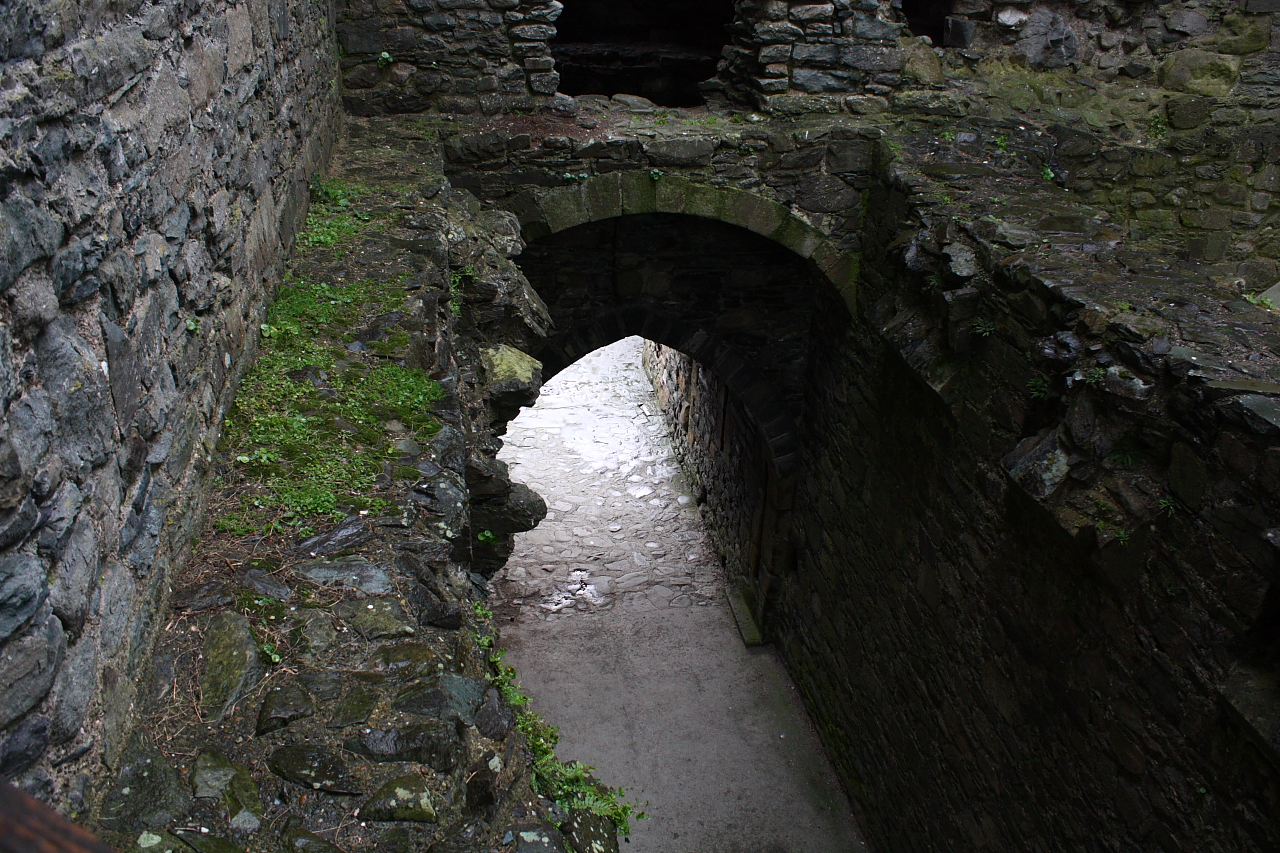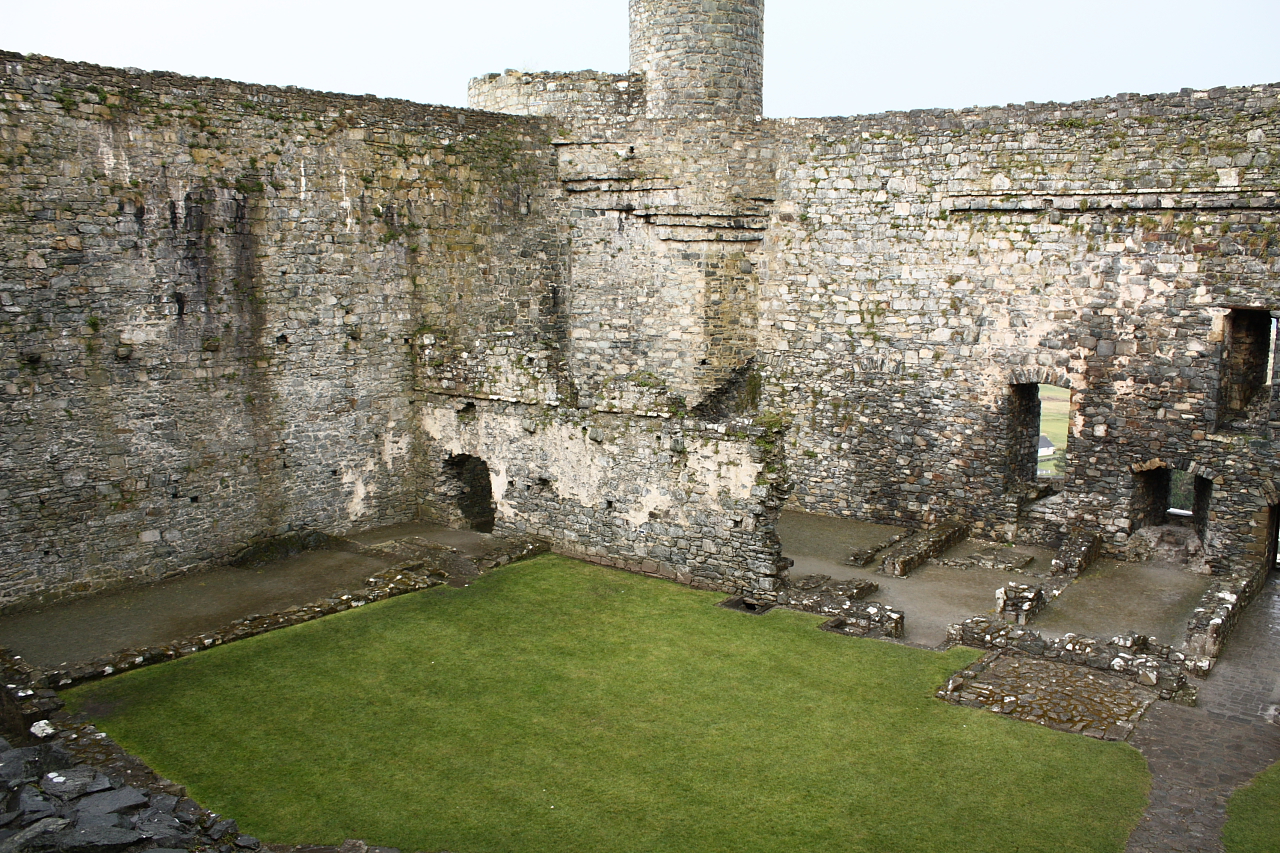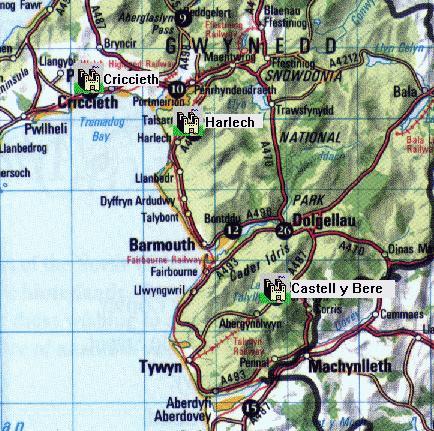 |
Harlech linked
in Welsh myth which is about the tragic heroine of Branwen, the daughter of
Llyr, of the Mabinogion. Mythology aside, it is small wonder that this is one
of the most familiar strongholds in Britain. Seen from the bluff of rock to the
south of the town, the view of castle, sea and mountain panorama is truly
breathtaking. But not only has it an unsurpassed natural setting, as a piece of
castle-building Harlech is also unrivalled. Even after seven centuries, it
remains a testament to a military architect of genius, Master James of St.
George that been introduced earlier. Here he adapted the natural strength of
the site to the defensive requirements of the age, and created a building which
combines a marvelous sense of majesty with great beauty of line and form.
King Edward's forces arrived at Harlech in April, 1283, and building work began almost immediately. Over the next six years an army of masons, quarries, laborers and other craftsmen were busily engaged in construction. In 1286, with the work at its height, nearly 950 men were employed under the superintendence of Master James. The final result was a perfectly concentric castle, where one line of defenses is enclosed by another. Unfortunately, the outer wall is ruinous today and fails to convey the true 13th-century effect.
 |
| outer curtain wall |
 |
| inner wall |
 |
| view from top of the castle |
The natural strength of the castle rock and cliff face
meant that only the east face was open to possible attack. Here the gatehouse
still offers an insolent display of power. The gate-passage itself was
protected by a succession of no less than seven obstacles, including three
portcullises. On either side of the passage were guardrooms, and the upper
floors of the gatehouse provided the main private accommodation at Harlech. The
first floor must have been for the constable, or governor, who from 1290-93 was
none other than Master James himself. The comfortable rooms on the top floor
probably served as a suite for visiting dignitaries, including the king.
The inner ward is surprisingly small and, as the
foundations show, a great deal of room was originally taken up by the
surrounding ranges of domestic buildings. To the rear lay the great hall and
kitchen. Against the north wall were a chapel and bake house, and to the south
a granary and a second hall. The corner towers provided further accommodation,
and today the visitor may care to climb one of the sets of steps to the
wall-walks from which there are superb views in all directions.
Lastly, the castle's remarkable feature is the defended
"Way from the sea," a gated and fortified stairway plunging almost
200 ft. down to the foot of the castle rock. Once, this gave access to supplies
from the sea, but the tide level has since receded, leaving Harlech somewhat
isolated upon its rock. During Madog AP Llywelyn's uprising of 1294-95, this
maritime lifeline proved the savior of the garrison, which was supplied and
victualled by ships from Ireland. That’s all about Harlech and on the last page
will talk about Castell y Bere.
 |
| All castle and its location at Nortwest wales |
No comments:
Post a Comment